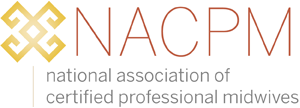Grappling with Clinical Challenges During the COVID-19 Pandemic
Fri, Apr 17, 2020 1:00 PM – 2:30 PM EDT
MEAC CEUs applied for
REGISTER NOW
New guidance and shifting information on safety considerations for pregnancy and birth is emerging almost daily during the current public health crisis, some based on hard evidence and some on professional opinion, challenging community midwives as they strive to mitigate risk to themselves and their clients while protecting the hallmarks of midwifery care that result in our good outcomes. In many situations, there are no clear or hard and fast solutions, and often mitigating rather than eliminating risk is the only path available. This webinar’s speakers will address several of these clinical situations, examining evidence, guidance and practice considerations to help midwives develop practices and protocols that meet their needs and those of their clients during these troubled and complicated times.
Keeping Waterbirth Safe During COVID-19
Barbara Harper, RN, CKC, BET
Founder/Director Waterbirth International
Access to hydrotherapy in labor is a standard and important vital comfort management practice globally and in the U.S. and is beloved by birthing parents and midwives for its comforting and beneficial effects. With many hospitals closing off access to their waterbirth tubs during the pandemic, community midwives are grappling with questions about waterbirth safety, offering water birth to their clients and how to address and mitigate risk during the COVID-19 pandemic. Barbara Harper will examine and discuss evidence and practical considerations and modification of protocols during this public health crisis. Barbara is an internationally recognized expert on waterbirth who teaches within hospitals, nursing schools, midwifery and medical school worldwide. Her award winning book and DVD, Gentle Birth Choices, has influenced hundreds of thousands of parents and professionals and has been translated into nine languages.
Nitrous Oxide and Oxygen – Considerations for Use During COVID-19
Michael Civitello, Sales Manager at Porter Instruments
Nitrous oxide has long been considered safe for pain relief in labor around the world and increasingly in the U.S. As more birthing people want to avoid transfer from community settings to the hospital during the coronavirus public health crisis, its use has taken on new relevance for pain management in community settings. Recently, the Society for Anesthesia and Perinatology (SOAP) recommended against the use of nitrous oxide for pain relief during labor, citing safety concerns related to COVID-19. Michael Civitello will discuss Porter Instruments’ response to SOAP’s statement and concerns about lack of evidence for their recommendation. He will address best practices for infection control including issues regarding instrument cleaning, filtering and aerosolization. Michael is the Sales Manager for Porter Instruments, responsible for sales of nitrous oxide and oxygen systems globally. He participated with a group of professionals – midwives, nurses, doctors and anesthesiologists – to make nitrous oxide and oxygen available within the labor and delivery space.
Protecting Midwives and the Use of Masks
Mary Lawlor, CPM, LM
Although community midwives are only caring for pregnant people who are not overtly ill with the novel coronavirus, recent studies reveal that a significant portion of individuals with coronavirus are asymptomatic or pre-symptomatic and can transmit the virus to others before showing symptoms. In light of this new evidence, the CDC recommends wearing cloth face coverings wherever social distancing is difficult to maintain, which for midwives includes necessary in-person prenatal and postpartum visits and labor. It is critical for community midwives to be protected against the virus, but with the severe shortage of Personal Protective Equipment (PPE), including approved N-95 and surgical masks, community midwives are left without adequate protection. The limited research on cloth face coverings does not show them to be very effective, but new research in light of COVID-19 suggests they can be constructed to perform better. Mary will share the findings of this new research and options for midwives to better protect themselves. Mary is a long-time home and birth center midwife in southern New England and a founder and executive director of NACPM.
Enhancing Safety and Mitigating Risk During the Pandemic
Jennifer Ross, CPM
Across the country, pregnant parents are worried about the virus and exploring their options for birth, and, in increasing numbers, choosing home birth midwives and birth centers for their care. Although their fear is of COVID-19 in the hospital, the reality is that the real spread of the virus is in the community, putting community midwives at risk of contracting the disease and of spreading it. While there are overlapping safety concerns and practices protocols between birth center and home birth, the home birth setting involves special challenges. While there is no official guidance for homebirth midwives, Jennifer Ross will share homebirth protocols and practices she has collected and curated to support midwives to enhance safety and mitigate risk. Jennifer, an NACPM board member, is a former engineer, manager and developer who lived and worked overseas for 17 years. She graduated from the Midwives College of Utah and is licensed in CA and in NH where she currently has a homebirth practice.
Please join!

